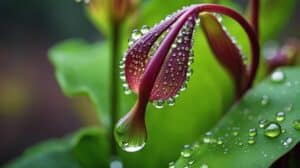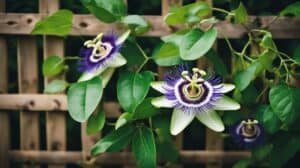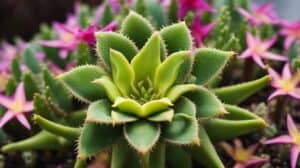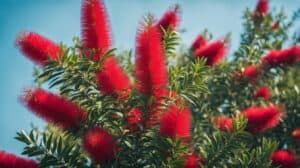Cyathea Cooperi, also known as the Australian Tree Fern, is a popular choice among plant enthusiasts for its striking appearance and easy-to-care-for nature.
This fern is native to Australia and is commonly found in tropical and subtropical regions.
Its fronds can grow up to 10 feet long, making it a great addition to any indoor or outdoor space.

For those new to the world of plant care, the Australian Tree Fern can be a great starting point.
It is a low-maintenance plant that can thrive in a variety of conditions, making it a versatile addition to any collection.
With a little bit of knowledge and care, even those without a green thumb can successfully grow and care for this beautiful fern.
In this article, we will provide a comprehensive guide on how to care for the Cyathea Cooperi, from planting to pruning and everything in between.
Getting to Know Cyathea Cooperi
Origin and Characteristics
Cyathea Cooperi, also known as the Australian Tree Fern, is a native of eastern Australia and is a popular ornamental plant in many parts of the world.
It belongs to the Cyatheaceae family and is known for its large fronds that can reach up to 10 feet in length.
The fronds are dark green and have a glossy texture, making them an attractive addition to any garden.
One of the unique characteristics of Cyathea Cooperi is its ability to adapt to a wide range of growing conditions.
It can grow in full sun or partial shade and is tolerant of a variety of soil types, including sandy, loamy, and clay soils.
This makes it an ideal plant for novice gardeners who are looking for a low-maintenance plant that can thrive in a variety of environments.
Growth Habits
Cyathea Cooperi is a slow-growing plant that can take several years to reach its full height.
It typically grows to a height of 10 to 30 feet and has a spread of 10 to 20 feet.
The plant has a single trunk that can be up to 1 foot in diameter, and it produces new fronds from the top of the trunk.
In order to thrive, Cyathea Cooperi requires regular watering and fertilization.
It is important to keep the soil moist but not waterlogged, as too much water can lead to root rot.
The plant also benefits from regular applications of fertilizer, which can help to promote healthy growth and vibrant fronds.
Overall, Cyathea Cooperi is a beautiful and low-maintenance plant that is perfect for novice gardeners.
With a little bit of care and attention, this plant can thrive in a variety of growing conditions and provide years of beauty and enjoyment.
Essential Care Instructions

Light Requirements
Cyathea Cooperi thrives in partially shaded areas or indirect sunlight.
Direct sunlight can cause the fronds to burn, so it’s best to avoid placing the plant in direct sunlight.
If you’re growing the tree fern indoors, place it near a window with filtered light or use artificial light to mimic natural light conditions.
Watering Practices
Tree ferns require regular watering to maintain healthy growth. Water the plant deeply once a week, ensuring that the soil is thoroughly moistened.
Avoid overwatering, which can lead to root rot. During the winter months, reduce watering to once every two weeks.
Soil and Fertilization
Cyathea Cooperi prefers well-draining soil that’s rich in organic matter.
Use a mixture of peat moss, perlite, and sand to create a soil mix that’s well-draining.
Fertilize the plant once a month during the growing season with a balanced fertilizer. Avoid fertilizing during the winter months when the plant is dormant.
Temperature and Humidity Control
Cyathea Cooperi thrives in warm and humid conditions. The ideal temperature range for the plant is between 60°F to 75°F.
Keep the plant away from cold drafts and ensure that the humidity levels are between 50% to 80%.
You can increase humidity levels by misting the plant regularly or using a humidifier.
Common Challenges and Solutions

Pest Management
One of the most common challenges faced by Cyathea Cooperi growers is pest infestation.
The most common pests that attack this fern include spider mites, mealybugs, and scale insects.
These pests can cause significant damage to the plant, leading to stunted growth, yellowing of leaves, and even death.
To manage pest infestation, it is recommended to regularly inspect the fern for signs of infestation.
If an infestation is detected, it is important to act quickly to prevent the pests from spreading.
One effective solution is to use a natural insecticide such as neem oil or insecticidal soap.
These products are safe for the plant and can effectively eliminate pests.
Disease Prevention
Another common challenge faced by Cyathea Cooperi growers is disease.
The most common diseases that affect this fern include root rot, leaf spot, and fungal infections.
These diseases can weaken the plant, leading to stunted growth, yellowing of leaves, and even death.
To prevent disease, it is recommended to maintain proper growing conditions for the fern.
This includes providing adequate water and drainage, avoiding over-fertilization, and ensuring proper air circulation.
It is also important to regularly inspect the plant for signs of disease and to remove any infected leaves or stems immediately.
In conclusion, by following these simple tips for pest management and disease prevention, even newbies can successfully grow and care for Cyathea Cooperi.
Frequently Asked Questions

What are the ideal lighting conditions for an Australian tree fern?
Australian tree ferns thrive in bright, indirect light. They can tolerate some direct sunlight, but too much can damage their fronds.
It’s best to place them in a spot where they receive filtered light or dappled shade.
Avoid placing them in dark corners or areas with no natural light.
How do you properly water and maintain the moisture levels for a Cyathea Cooperi?
Australian tree ferns require consistently moist soil, but not waterlogged.
Water them thoroughly once a week or when the top inch of soil feels dry to the touch.
Use a well-draining potting mix and ensure that the container has drainage holes. Mist the fronds regularly to maintain humidity levels.
Can Australian tree ferns be grown in containers, and if so, how?
Yes, Australian tree ferns can be grown in containers. Choose a container that is at least twice the size of the root ball and has drainage holes.
Use a well-draining potting mix and ensure that the container is placed in a spot with bright, indirect light. Water and fertilize as necessary.
What are the common pests and diseases that affect Australian tree ferns, and how can they be treated?
Australian tree ferns are susceptible to mealybugs, scale insects, and spider mites. Treat infestations with insecticidal soap or neem oil.
They can also be affected by root rot if they are overwatered or planted in poorly draining soil.
Ensure that the soil is moist but not waterlogged and that the container has drainage holes.
What is the expected growth rate of an Australian tree fern, and how tall can it grow?
Australian tree ferns can grow up to 20 feet tall in their natural habitat. However, in containers, they typically grow to be around 4-6 feet tall.
The growth rate can vary depending on the conditions, but they generally grow slowly.
In what climate zones can Australian tree ferns thrive outdoors?
Australian tree ferns thrive in warm, humid climates with temperatures between 60-80°F. They can be grown outdoors in USDA hardiness zones 9-11.
In colder climates, they can be grown indoors or in a greenhouse.














